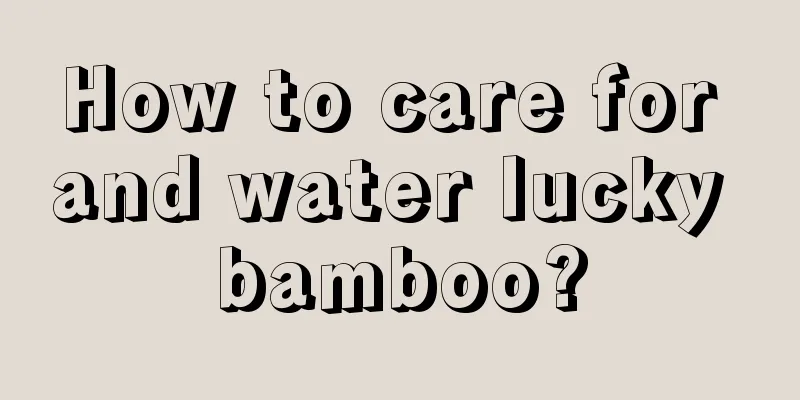Pick up the fallen petals quickly! Add some ingredients and add water, and it will bloom year after year!

Flowers "eat" flowers and feed themselves!There is a line in a poem that goes, "Fallen petals are not heartless, they turn into spring mud to protect the flowers." This means that after the petals wither, they are not no longer unrelated to the flower. When they fall into the soil and undergo natural decomposition, they will eventually become nutrients in the soil and continue to promote the growth of the flower. If you think about it this way, it’s actually not a pity if the flowers wither. If you quickly make them into fertilizer and apply them to the flowers, better flowers will bloom. Why not do it? So today Huahua is going to talk to you about how to make your own flower fertilizer using flower petals! 1. Collect the fallen petals. For example, when the Kalanchoe is in full bloom, there will be more fallen petals, making it easier to collect. Others like rose petals can also be used as flower fertilizer. 2. Put the collected flower fertilizer into a plastic bag, add some clean water, seal it, and expose it to the sun. Every 10 days, open the plastic bag to allow ventilation to prevent swelling. 3. After about a month, the flower fertilizer will be fully decomposed. Mix it with clean water in a ratio of 1:20 and water it with the flowers. 4. Or you can place the decomposed petal fertilizer in a ventilated place to dry, then mix it with flower soil and use it as a soil matrix for planting flowers to provide nutrients for the flowers. 5. The petals are rich in nitrogen fertilizer. Using petal organic fertilizer to grow flowers can make more flowers bloom and the leaves greener. Flowers actually like garlic!Now that we know the technique of petal fertilizer, let’s take a look at what other peculiar habits flowers have! Normally we are quite averse to garlic because of its strong smell and it seems impolite when we go out. However, garlic is definitely a good thing for people who grow flowers. If you don’t believe it, let’s take a look. 1. Promote germination. Peel and mash the garlic, add cold boiled water in a ratio of 1:3, then apply the prepared garlic liquid to the sprouting area, which can sprout new sprouts about 5 to 7 days in advance. 2. Prevent rot. First remove the rotten part, then cut the garlic cloves, and use the cross-section to smear the wound so that a layer of garlic mucus adheres to it. Then apply it once every 7 to 10 days until it heals. This can effectively prevent rot. 3. Use as a fungicide. After mashing the garlic, add 1 spoon of soapy water and 2 cups of water, mix well and let it sit for a while. When using, dilute it with 4 times the amount of water, and then spray it on the plants infected with fungi, spraying both the leaf surface and the back of the leaves. 4. Alleviate powdery mildew. Mash a head of garlic into garlic paste, add 1 liter of water, seal it for one day, filter out the water and dilute it three times, then spray it on the leaves to relieve powdery mildew. Try it with dried flower petals and garlic! Huahua will continue to find more practical methods for flower lovers Let's make the flowers more beautiful together~ |
<<: Can the dragon's vomit be placed in the bedroom?
Recommend
How to grow feather maple
Feather Maple Growing Conditions Feather maple li...
When is the best time to water the peace tree? When is the best time to water it?
Peace tree watering time The peace lily grows rel...
Can peaches and pineapples be eaten together?
1. Can be eaten together The nutrients contained ...
How to prune kapok
The significance of pruning The most important re...
The buds of azaleas wither. Why do azaleas wither in summer?
1. Exposure to the scorching sun Reason: Azalea c...
How to fertilize lavender potted plants
1. Appropriate amount of time Before fertilizing,...
What to do if you water your cyclamen too much
Overwatering Cyclamen Harms of excessive watering...
Can honeysuckle be grown hydroponically?
Can honeysuckle be grown hydroponically? Honeysuc...
Cultivation methods and precautions of Dieffenbachia
1. Lighting Dieffenbachia is an evergreen herb of...
How to grow the silkworm
1. Sufficient sunlight During the growth stage, s...
Homemade Vegetable Insecticide Recipe
Many people are prone to diseases and insect pest...
How to care for Ulmus pumila bonsai and what to pay attention to
Maintenance method of elm bonsai The small-leaved...
What to do if there are black spots on the leaves of green radish
1. Medication When the cultivated green radish is...
African Impatiens cultivation methods and precautions
Farming methods Temperature and light The suitabl...
How to propagate hydrangea
Cutting time The best time for hydrangea cuttings...









